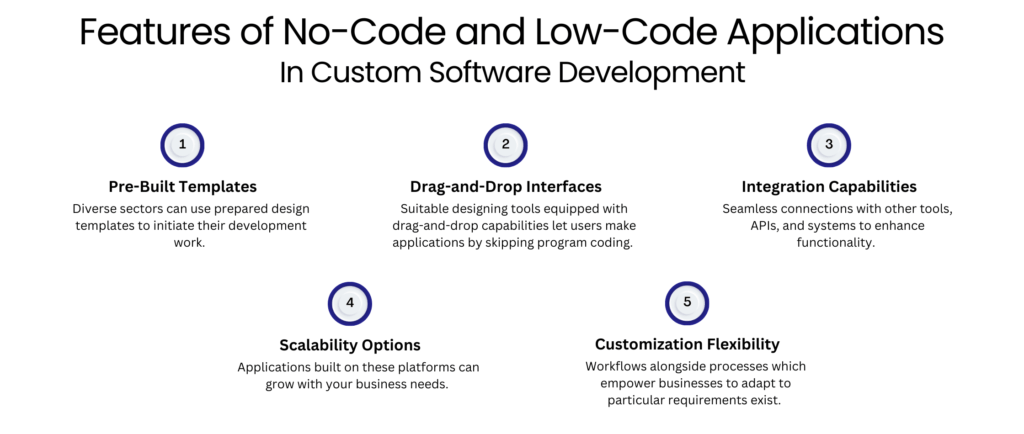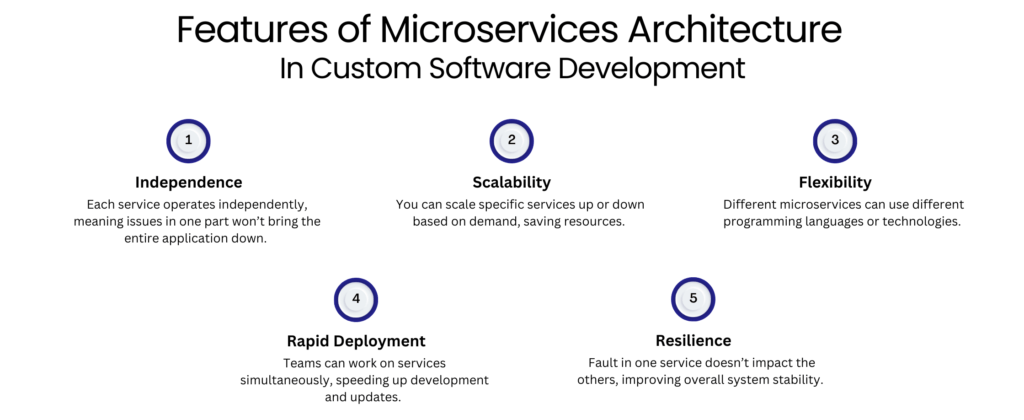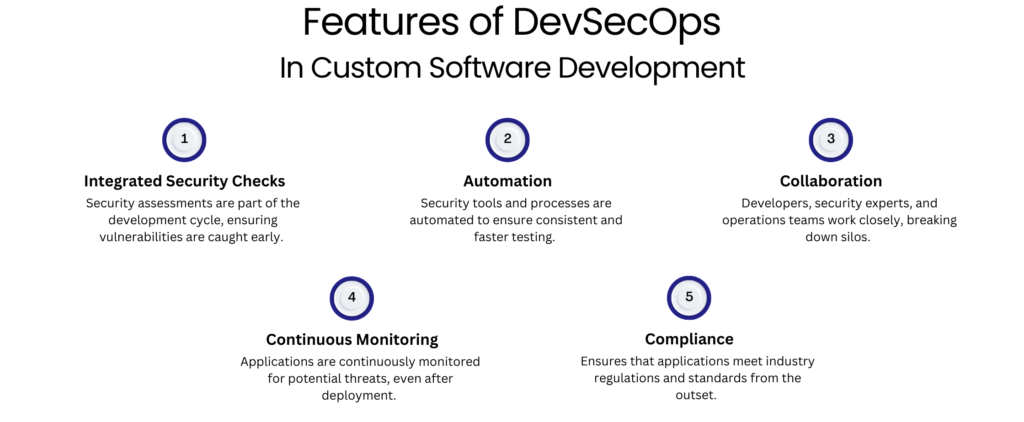Custom Software Development Trends 2025- For your Business growth

Key Custom Software Development Trends Shaping Business Growth in 2025
Did you know?
The worldwide expenditure for enterprise software totaled $913 billion in 2023 as businesses experienced a 12.4% growth trend during that time.
Strange, right?
Through economic hardships and global challenges the enterprise software industry demonstrated continuous expansion by doubling its market value during the past ten years.
Modern businesses rest entirely on software platforms since customer relationship management (CRM) tools generated $55 billion in revenue alongside enterprise resource planning (ERP) solutions producing $107 billion.
The expansion of this market during 2025 involves more than quantity growth since organizations need innovative solutions that address their individual requirements.
Driving a vehicle without any software updates since 1970 means no navigation systems and no safety features but only basic equipment exists.
Now picture competing in a race with that same car.
It’s impossible, right?
The same goes for software.
Organizations using rigid outdated software systems would experience difficulties in remaining competitive during today’s high-speed innovation environment.
Custom software development matches the process of vehicle updates by letting businesses adapt to emerging trends while boosting operational efficiency to compete successfully in their field.
The key to leadership success in competitive markets demands more than maintaining basic business operations because CEOs and entrepreneurs must predict future directions and respond appropriately to these changes.
Company operations gain agility by using custom software development tools for enhanced workflow management combined with better customer service delivery.
The market demand for swift trend adjustments requires customized software that matches your organizational objectives to keep you successful. Improved strategic performance depends on regular monitoring of these industry trends.
The profile for 2025 shows custom software development has evolved from matching change to actively producing it.
Through this blog we will explore the main drivers that influence custom software development trends throughout 2025.
This blog explores the ways innovative technologies push organizations to adjust their operations as they push their industries toward leadership positions.
Your organization can discover ways to use upcoming trends so they create a competitive edge by reading beyond this text.
In a dynamic business environment, scalability is crucial. IT services provide the flexibility to scale up or down your resources based on changing business needs. Cloud services, for instance, allow seamless expansion of storage and computational power

Serana Belluci
Product Designer
AI in Software Development
Artificial Intelligence exists beyond its status as a novel addition to modern technology but also stands beyond the realm of artifacts.
Artificial intelligence serves as an “old wine in a new bottle” solution which continues to transform software development approaches throughout 2025.
AI’s integration into the software development cycle is no longer a luxury—it’s a necessity.
One exciting area where AI will make waves this year is voice-enabled applications. Imagine commanding your applications just as you would talk to a friend—seamless, intuitive, and efficient.
But it doesn’t stop there. Voice-enabled apps are more than just convenient; they:
- Benefit the environment by reducing the need for extensive manual processes, saving time and resources.
- Transform businesses with faster customer interactions, improving accessibility for users with disabilities.
- Elevate user experiences by offering hands-free, real-time responses, making applications smarter and more human-like.
How AI Helps Developers
For developers, AI is like having a brilliant co-pilot who’s always on the job. Here’s how AI streamlines their workflows:
- Automated Code Generation: With tools like GitHub Copilot, developers can reduce repetitive tasks and focus on creativity.
- Bug Detection: AI-powered tools spot errors faster, leading to cleaner, more reliable code.
- Enhanced Productivity: AI simplifies complex algorithms, turning time-consuming tasks into quick wins.
How AI Benefits Businesses
Why businesses implement AI goes beyond maintaining competitiveness because it delivers them sustainable growth.
Here’s what it brings to the table:
- Improved Decision-Making: AI processes big datasets to generate meaningful insights which help organizations identify future market patterns.
- Cost Efficiency: Automation of recurring tasks enables businesses to use their assets toward important priorities.
- Customer Engagement: Through personalization via artificial intelligence systems users experience better interactions leading to stronger customer satisfaction rates and lower churn.
Why You Should Embrace AI
Your business must adopt AI because it no longer makes sense to keep delaying implementation.
Refusing to embrace AI during 2025 is equivalent to resisting an oncoming wave because it will force your business to lag behind a competitive field while they advance.
AI in custom software development empowers businesses to:
- Business success in continuously evolving markets requires tactical flexibility.
- Extraordinary performance at scale through maintenance of high-quality standards exists naturally within your operations.
- Build smarter, user-centric applications that customers love.
To grow, businesses need to embrace these AI-driven software development trends. AI has become an essential compass for business success and innovation because technology continues to evolve.
Low-Code and No-Code Development
Imagine building a fully functional application with just a few clicks—dragging, dropping, and tweaking components without writing lines of complex code.
Nice, right?
The operational reality of low-code and no-code development platforms exists as a stark contrast to what developers might envision.
Even someone with zero technical expertise can create or modify applications effortlessly.
It’s like magic for businesses, making app creation faster and more accessible than ever before.
Doesn’t it make you think?
With less code or no code at all, businesses unlock the trifecta of benefits: cost savings, time efficiency, and simplified processes.
The platform functions as a transformative tool that fast-tracks digital projects at affordable costs for both startup companies and larger business organizations.

Business Benefits of Low-Code and No-Code Development
For companies these no-code and low-code development tools function beyond instruments into strategic organizational drivers.
Here’s how they transform organizations:
- Cost Savings: The elimination of specialized developer needs results in substantial cost savings for businesses regarding employee acquisition and training investments.
- Faster Time-to-Market: The platform accelerates application development from months to weeks so businesses remain competitive ahead.
- Empowered Teams: Non-technical employees can create or modify applications, fostering collaboration and reducing IT dependency.
- Adaptability: Quickly update or pivot applications in response to market changes, ensuring businesses stay agile.
- Reduced Maintenance: Based on Platform systems business owners can concentrate on innovation because platforms perform operational maintenance and security tasks.
By 2025 low-code and no-code development will have transcended the status of trends to become essential tools for businesses that seek both innovation and success in their digital markets.
Microservices Architecture
Think about this: The premise rests on partitioning big complex applications into flexible autonomous components that can be separately developed, tested and unified into a cohesive end product.
Sounds efficient, doesn’t it?
Software development now praises microservices architecture as the fundamental principle that enables effective application structure and management.
Yes, you read it right.
The compartmentalization of business applications through microservices generates flexible modules which drive efficiency along with scale and speed.
Microservices function as independent operational units supporting different functions while operating efficiently with other units.
The modeling system functions like a LEGO construction set with separate blocks which keep their functions independent from the overall design. That’s how microservices empower businesses.
How Do Microservices Work?
Microservices are typically run inside containers, where each service operates as a separate process. These services communicate through lightweight protocols like APIs.
This separation allows developers to work on, deploy, and scale services independently without worrying about the entire application.

Why Microservices Benefit Businesses
For businesses, microservices architecture is like having a superpower to streamline operations and innovate faster. Here’s how:
- Enhanced Efficiency: Teams can work on smaller, manageable pieces, leading to faster development cycles and fewer bottlenecks.
- Cost-Effective Scaling: Instead of scaling the entire application, businesses can scale only the services experiencing high demand, optimizing resource use.
- Improved Reliability: Exception-based reliability assists in keeping the entire system operational because individual service faults will not trigger a crash allowing for better uptime.
- Easier Updates: Feature updates and new features are deployable specifically to individual services as standalone changes without impacting the application whole.
- Better Customer Experience: Faster updates and greater stability translate to happier users.
The practical deployment approach of microservice architecture functions as an essential reshaper of modern software-building methods.
DevSecOps
Do you know how developers could ensure better security for cell phone apps by starting their foundation from the beginning?
The security benefits of DevSecOps arrive as a fundamental service.
Security integration needs to occur across all development periods until security becomes an essential component from the project’s initial structure.
DevSecOps implements Development Security and Operations modes united into the name to create security checks which begin upfront instead of waiting until the conclusion.
Building a house serves as our analogy here. Would you wait until the roof is on to check for cracks in the foundation?
Probably not.
Through its implementation developers can identify vulnerabilities which leads to early rectification before the release phase and ultimately minimizes future exploitation.
Fast-paced software development receives a transformative boost through DevSecOps which creates protected applications while avoiding slowdowns in software development.

Why DevSecOps Matters for Businesses
DevSecOps establishes a competitive advantage for businesses by representing security beyond protective measures.
Here’s why it’s essential:
Proactive Security:
- Replacement and correction of vulnerabilities during development phases enables DevSecOps to save budgets and reduce time while ensuring accuracy of systems.
- It minimizes risks, ensuring apps are secure before reaching end users.
Faster Delivery:
- Builders can eliminate time-consuming end-of-pipeline testing because they embed security into development workflows.
- The use of automation technology enables faster completion times leading to speedier product distributions.
Enhanced Trust:
- Customers value security. By delivering secure apps, businesses build trust and enhance their reputation.
- Reduces the chances of costly breaches, which could damage brand image.
Compliance and Peace of Mind:
- Meeting compliance requirements becomes seamless as security is built-in.
- Businesses can operate confidently, knowing they’re protected against threats.
Cloud Computing
Imagine carrying a bulky photo album everywhere you go just to show your friends some pictures.
Sounds inconvenient, right?
That’s what cloud computing solves—except, instead of photos, it handles everything from app data to IT resources.
When you store your data in the cloud it remains accessible through any device from anywhere at any time.
No more lugging around hardware or worrying about offline storage limitations.
In the world of application development, cloud computing offers unmatched flexibility.
Developers can store vast amounts of data and access it instantly when needed, enabling faster and more efficient workflows.
It’s like having a super-organized digital toolbox you can access from anywhere!

Why Cloud Computing Matters for Businesses
The year 2025 marks the period after which cloud computing emerges as a mandatory operational foundation for every business. Here’s why:
Data Accessibility:
- Teams can access data globally, enhancing collaboration and productivity.
- Remote work becomes seamless with centralized data storage.
Cost Savings:
- Eliminates the need for expensive hardware and maintenance.
- Optimizes costs by allowing pay-as-you-go models.
Enhanced Performance:
- Speeds up application development with easily accessible resources.
- Ensures minimal downtime, keeping business operations running smoothly.
Innovation at Scale:
- Businesses can use the system to implement modern technologies including AI and IoT.
- The solution provides a testing ground where businesses can explore novel concepts through exploratory experimentation while maintaining cost efficiency.
Final thoughts
For future business success in 2025 onward companies must maintain leadership in current yet changing software development service practices.
This brief explores upcoming customs software solutions which will transform industry operations throughout the world.
Custom software development exceeds standard application development because it generates business-aligned solutions which achieve scalability while ensuring efficiency and user-oriented ease-of-use.
A majority of businesses face challenges in locating trustworthy offshore development partners who maintain contemporary industry practices. This is where Arna Softech makes a difference.
Why Choose Arna Softech?
At Arna Softech, we keep pace with evolving technologies, ensuring that businesses like yours stay ahead without disruption. We specialize in:
- Custom Software Development Services – Tailored solutions for your unique business needs.
- Cloud-Based Solutions – Scalable and secure applications on Azure Cloud.
- Data Engineering & Analytics – Driving insights with Azure Synapse and Power BI.
- QA & Testing Services – Ensuring high-quality performance and reliability.
- User Experience & Design Services – Modern and intuitive interfaces that enhance user engagement.
With Arna Softech, you can onboard within just 2 days, gaining access to a team of highly skilled professionals dedicated to delivering trending custom software solutions.
We create user-centric applications which combine scalability features with robust security measures to conform specifically to your business needs.
Your business transformation begins when you join our innovative software development services partnership.

